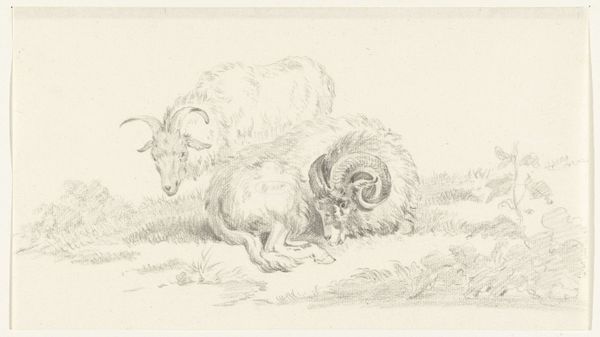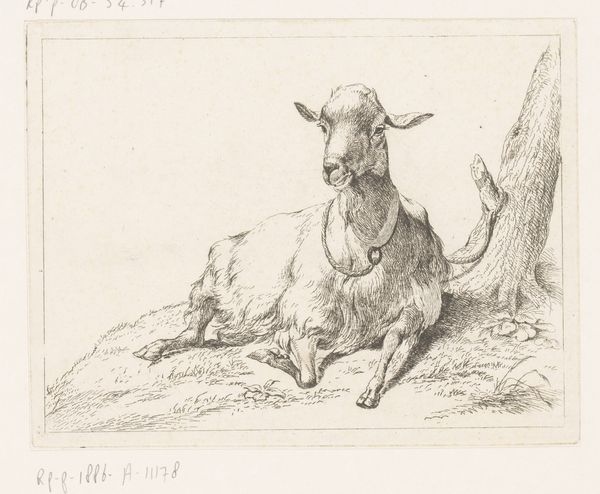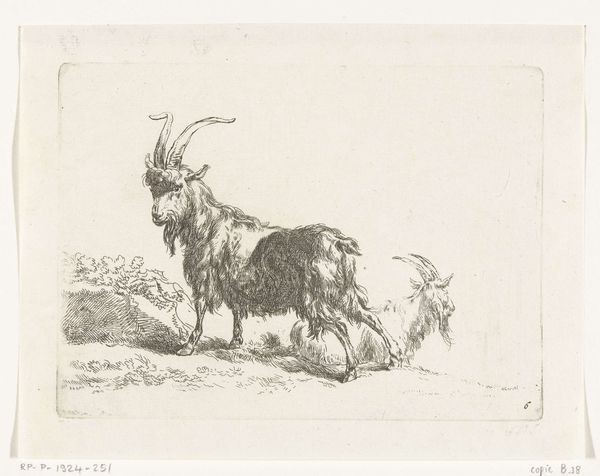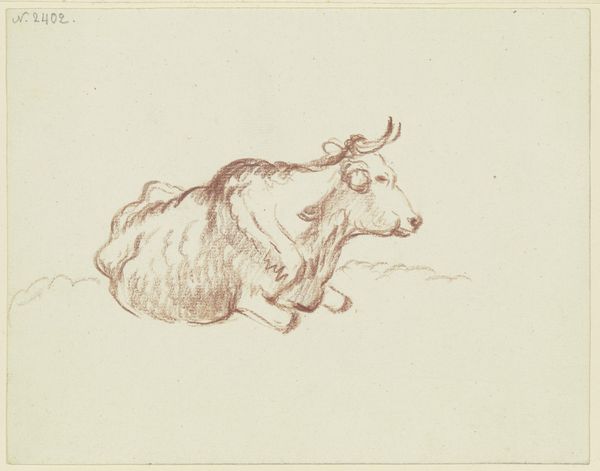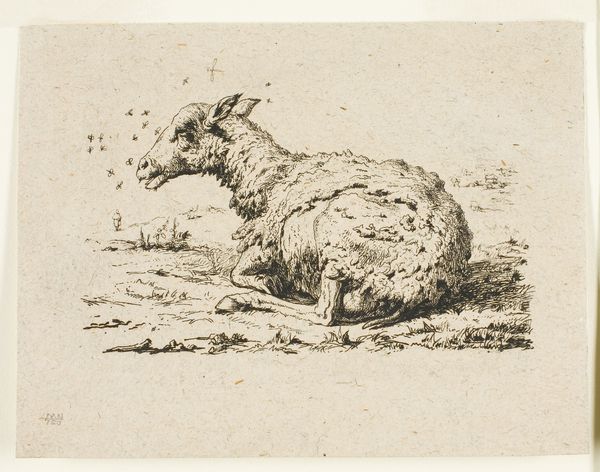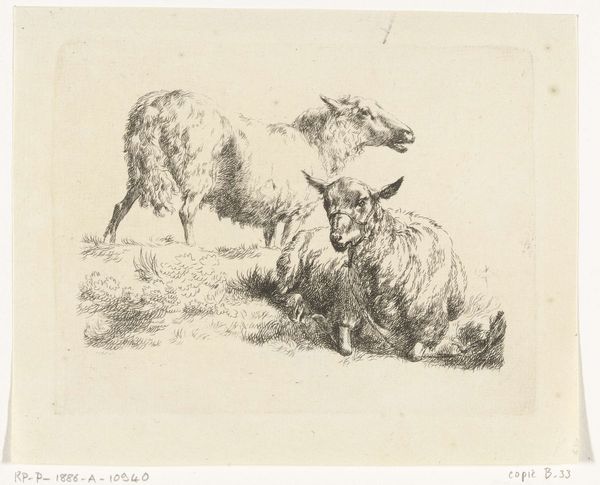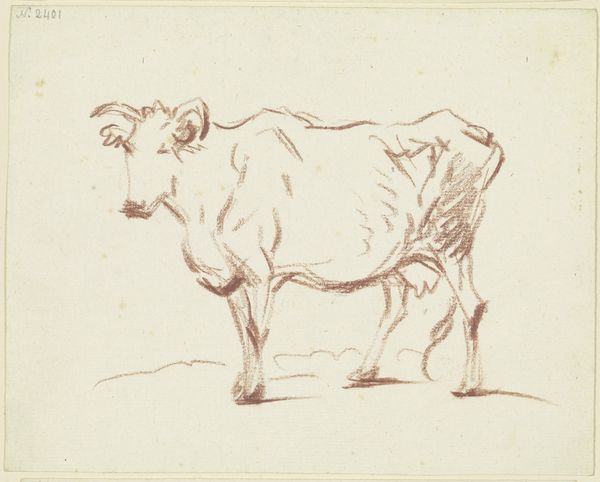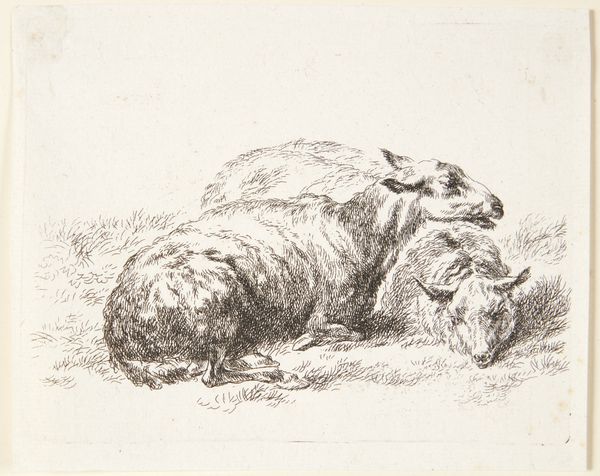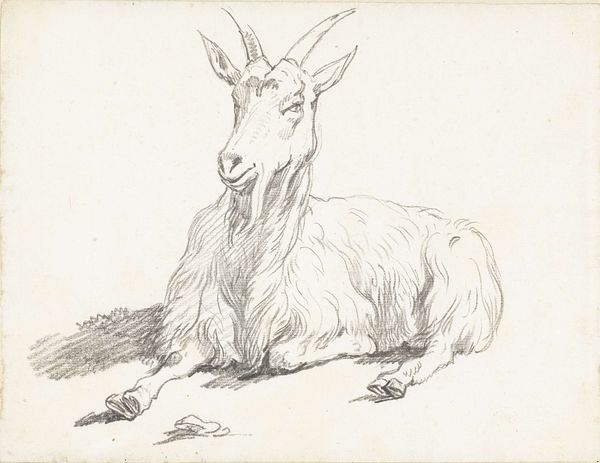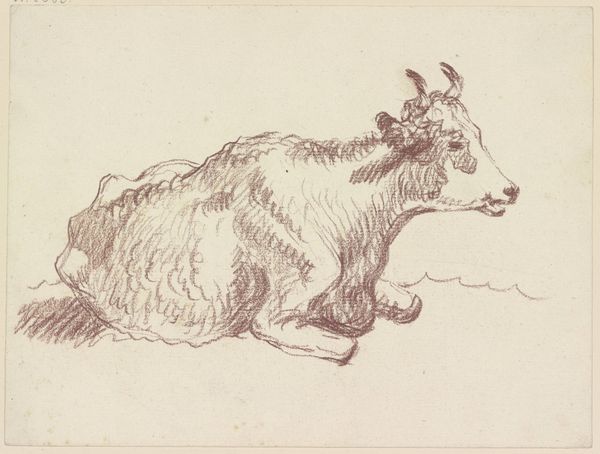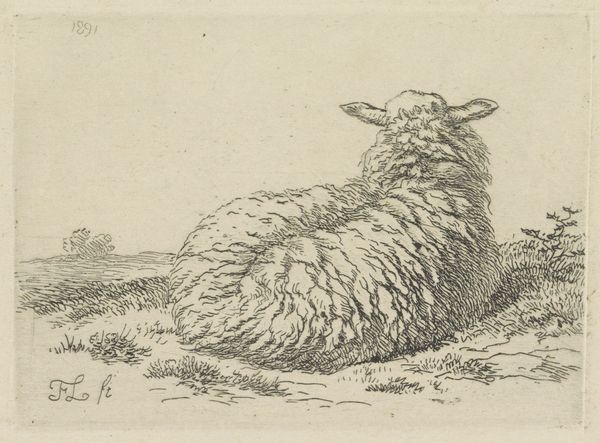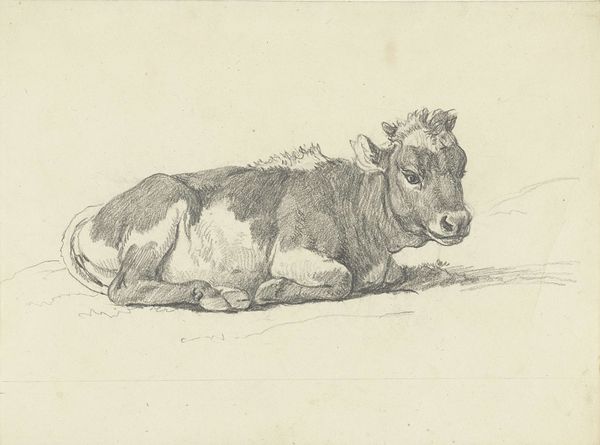
drawing, paper, pencil
#
drawing
#
animal
#
landscape
#
figuration
#
paper
#
pencil
#
realism
Dimensions: height 125 mm, width 171 mm
Copyright: Rijks Museum: Open Domain
Curator: Here we have "Liggend schaap, naar rechts" or "Lying Sheep, facing right" by Jean Bernard. This pencil drawing on paper, created sometime between 1775 and 1833, resides here at the Rijksmuseum. Editor: It’s surprisingly serene. The soft pencil strokes give it a gentle, almost dreamy quality. The sheep looks perfectly content just lying there, doesn’t it? There's a stillness to it, like a quiet moment captured. Curator: Pastoral scenes like this were becoming increasingly popular with a rising urban merchant class at the time. Artists provided idyllic visions of the countryside, which offered a comforting contrast to city life and, moreover, justified new forms of agrarian production. It connects with broader discussions around land use and national identity, offering a romantic, somewhat idealized portrayal of rural existence. Editor: Interesting how even something seemingly simple can carry so much baggage, literally sheep’s clothing, I suppose? Though, I also wonder if it was simply an opportunity to study texture and form. Look at how the artist suggests the wool without meticulously drawing every strand. It’s more about the impression, the overall feel of "wooliness," and the animal's weight, its volume. Curator: You're right. The economy of line is quite striking, especially when viewed through the lens of drawing as an academic exercise. It reflects an emerging scientific naturalism that wanted to both appreciate and master nature’s bounty and appearances. The drawing isn’t merely decorative, it’s also informational and political. Editor: Politically woolly, perhaps! But that economy gives it so much charm! There's a freshness to it. One can sense that the artist truly saw the sheep, its particular character in that very instant. You can see how easily the sheep, so seemingly quiet, would hop up to go nibble more grass. Curator: Indeed, it reveals how art always operates on multiple registers—aesthetics, emotion, and ideology intertwined, subtly shaping how we see the world. Editor: And sometimes, it’s just a really lovely sheep drawing, too. I appreciate learning how context and politics shaped its cultural role but the personal artistic touch can move one beyond any such specific constraint. Curator: I agree; understanding the various lenses through which we look at the work deepens our overall appreciation and its continued impact today. Editor: Exactly, a dialogue between history, and that intimate relationship an artist builds with their subject… like sketching a sheep.
Comments
No comments
Be the first to comment and join the conversation on the ultimate creative platform.
